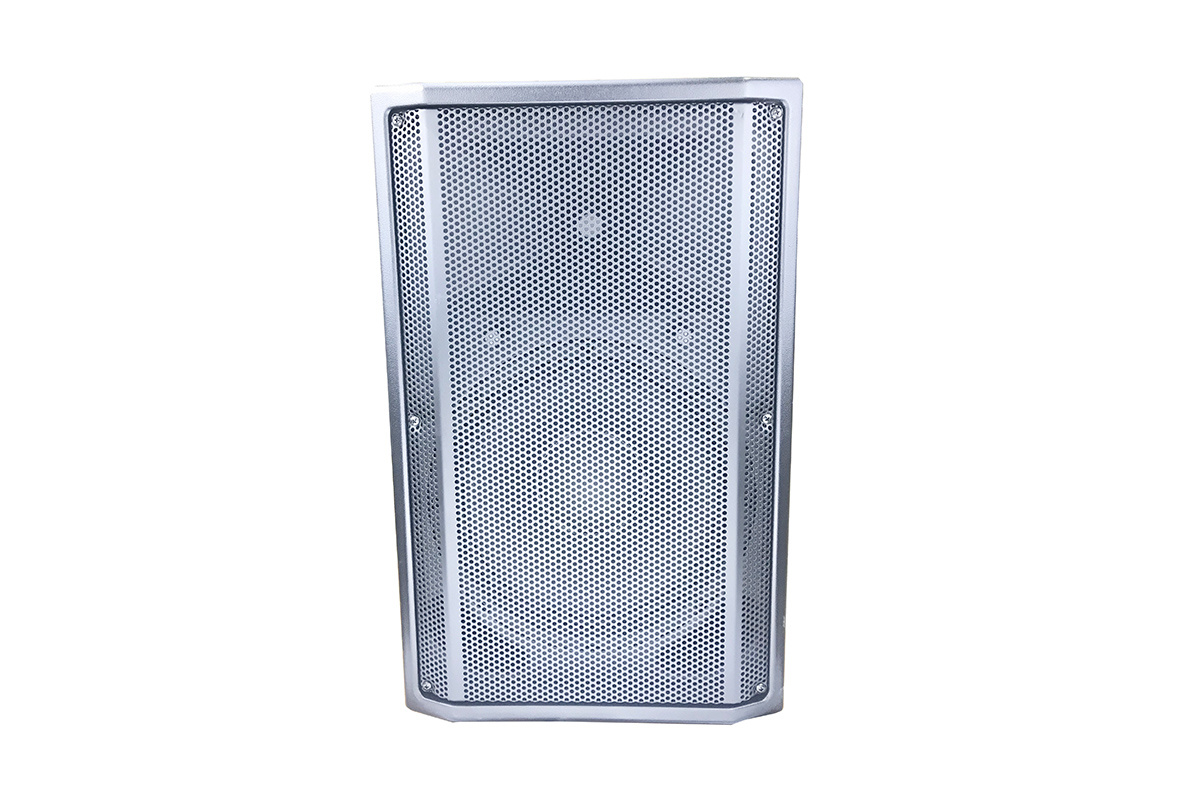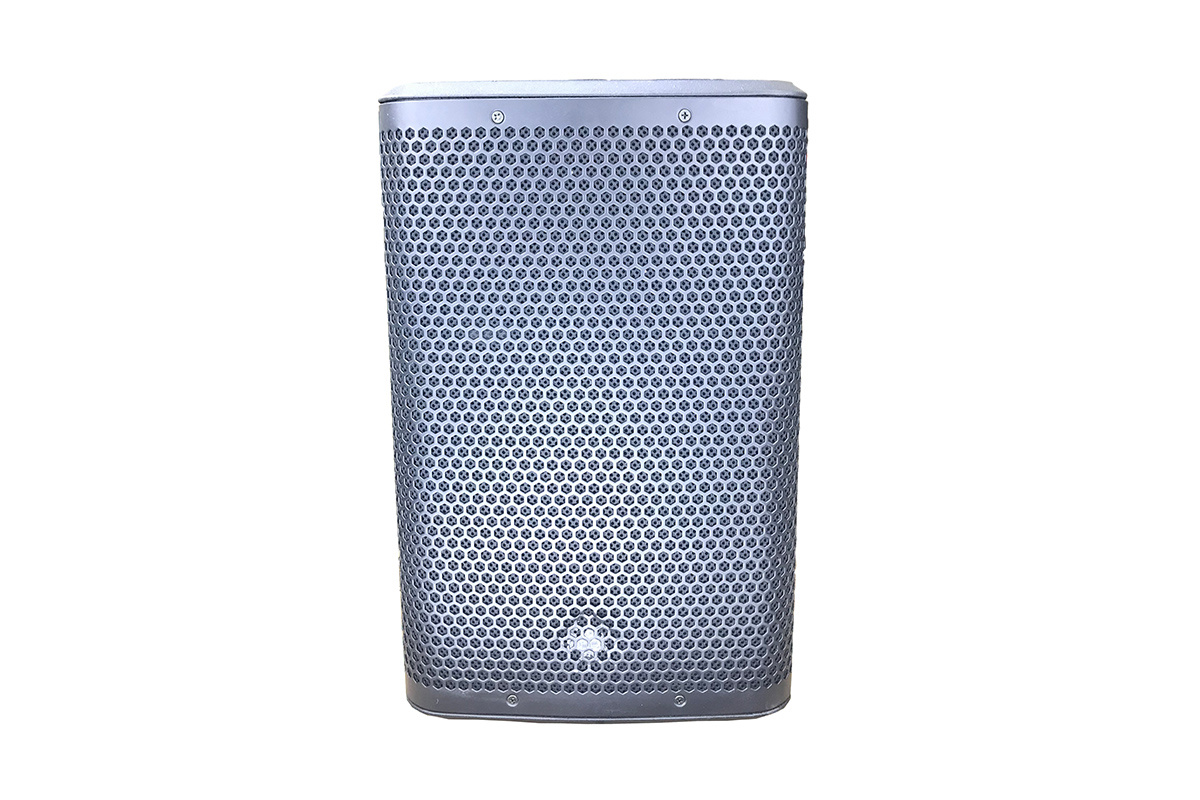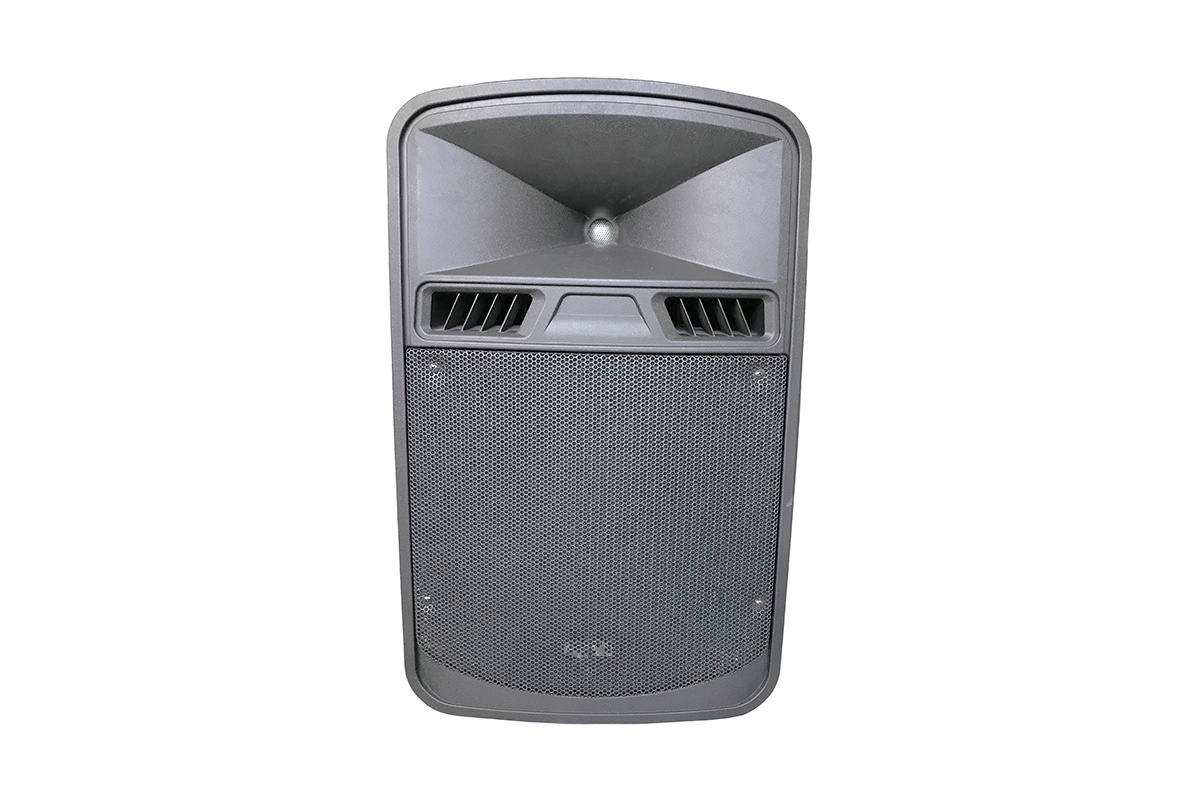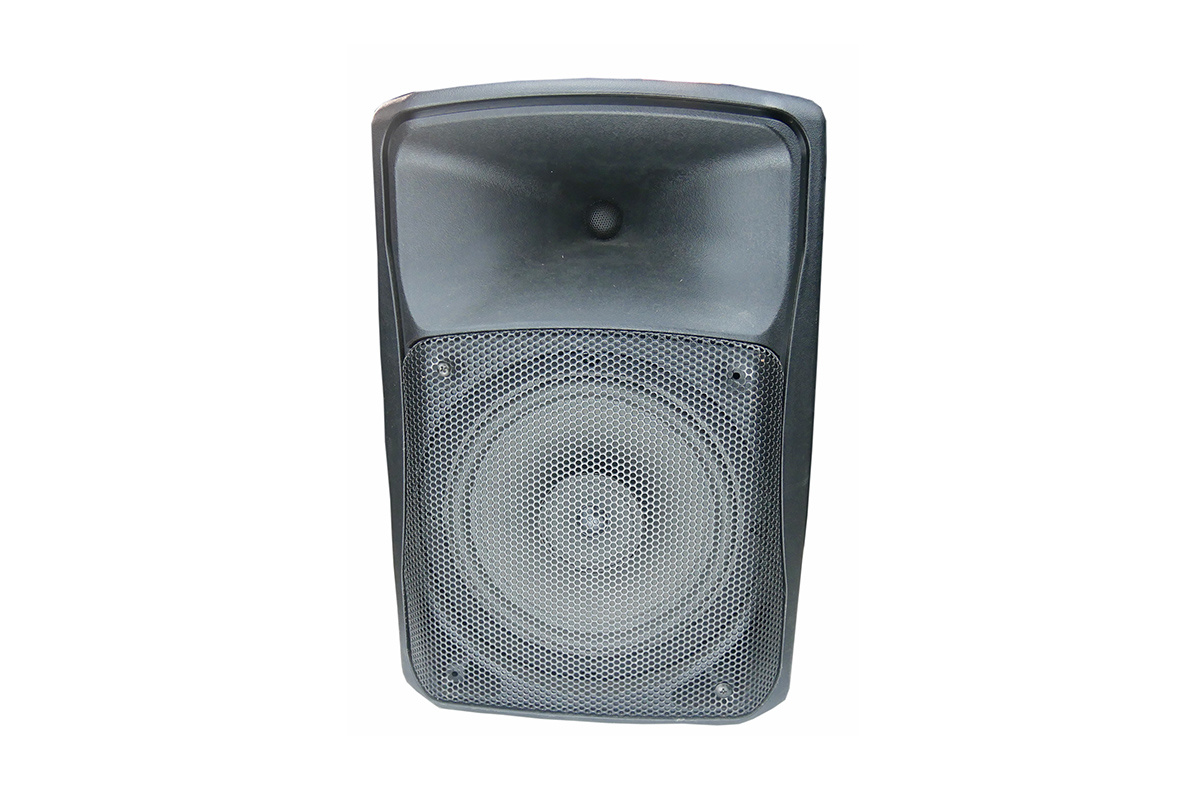KA-40 KV-60
KA-40 KV-60
MIXER WITH BUILT-IN AMPLIFIER
Category :
Mixers & DJ Mixers
keywords :
KA-40 KV-60
MESSAGE
- Product description
- Specification
-
- Commodity name: KA-40 KV-60
- Commodity ID: 1279079770712854528
MIXER WITH BUILT-IN AMPLIFIER
· 4 channels or 6 channels with build-in amplifier
· MP3 player with recording and Bluetooth
· 3-band EQ, Aux monitor and Aux FX control on each channel
· Pan control and mute switch on each channel
· 1/4" TRS main stereo line outputs
· 1/4" TRS stereo headphones output
· Headphones level control
· 16 built-in effects with input level
· Faders for stereo return, FX return, monitor and main
· +48V Phantom power can be applied for all Mics
· Speaker outputs
· Output power:2 x 150W @ 4ohm RMS
Front Panel Features
1.BALANCE MIC INPUT
We use phantom-powered, balanced microphone inputs just like the big studio mega-consoles for exactly the same reason: This kind of circuit isexcellent at rejecting hum and noise. You can plug
in almost any kind of mic that has a standard XLR male mic connector.
2. MONO LINE INPUTS
These 1/4 " jacks share circuitry (but not phantom power) with the mic preamps and may be driven by balanced or unbalanced sources.To connect balanced lines to these inputs, use a 1’4" Tip-Ring-Sleeve (TRS) plug To connect unbalanced lines to these inputs,use a 1’4" mono (TS) phone plug or instrument cable.
3.INSERT I/O
This is where to plug unbalance headphones.It is between EQ and fader on each Mono channel.You can use these connect different kinds of external device,such as equalizers,compressors or filters.There are Tip-Ring-Sleeve(TRS) headphone plugs,can support double operation.
4. STEREO LINE INPUTS
These 1/4 " jacks may be driven by stereo or mono,balanced or unbalanced sources. They may be used with just about any professional or semi-pro instrument,effect or tape player.To connect balanced lines to these inputs, use a 1’4" Tip-Ring-Sleeve (TRS) plug.To connect unbalanced lines to these inputs,use a 1’4" mono (TS) phone plug or instrument cable.If using just a mono source, plug it into the left input (labeled mono) and the signal will appear (as if by magic) equally on the left and right of the main mix.
5.STEREO RETURN
This is where to connect the outputs of parallel effects devices (or extra audio sources). The circuits will handle stereo or mono, balanced or unbalanced signals. They may be used with just about any pro or semi-pro effects deviceor line-level source .
6. MON SEND
Stage monitors allow the talented musicians to hear themselves clearly on stage, and this can often be a good thing. The monitor mix may be carefully adjusted in level using the aux mon controls . These tap a portion of each channel's signal to provide a 1/4 " TRS output here to feed external stage monitors. These could either be passive stage monitors powered by an external amplifier, or powered stage monitors with their own amplifier built in.
The monitor signal is the sum (mix) of all the channels whose aux mon control is set to more than minimum. If they want “more me, and less Keith,” you should turn up their channel's aux mon control, and turn down Keith's.
The monitor output is not affected by the main fader or the channel faders . This allows you to set up the monitor mix and level just right, and not have it change when a channel fader or the main mix fader is adjusted. This is known as “pre-fader.”
7. FX SEND
This 1/4 " TRS line-level output may be used to feed an external effects processor (FX), such as a nice sound effect or delay unit. The output from this jack is an exact copy of what goes into the internal FX processor, being the careful mix of all channels whose aux FX control is turned to more than minimum.
8. 1/4" MAIN OUTS
These outputs feed the main mix out into the waiting world. Amplifiers may be fed this way or through the XLR main outputs.
9. FX FOOTSWITCH
This 1/4 " TRS connector is where to connect a footswitch. This will allow you to easily mute or
un-mute the internal effects, while stamping your foot and looking like you were mad about something.Any latching one-button on/off footswitch will work.
10. PHONES
This 1?4 " TRS stereo jack will drive any standard headphone to very loud levels. The wiring follows standard conventions:
Tip = Left channel
Ring = Right channel
Sleeve = Common ground
The headphones output is the stereo main mix, not affected by the main fader.
11. TAPE INPUT
These stereo unbalanced RCA inputs are designed to work with semi-pro as well as pro player/recorders.They may also be connected to any standard source with an unbalanced line-level output, such as a CD or DVD player, iPod, and so on.
Connect the source’s line-level outputs here using good quality hi-fi (RCA) cables.
These may be used with a tape or CD player to feed musicto a PA system between sets when the break switch [45] is engaged. The level coming into the mixer may be adjusted with the tape level knob [35]. For example, press the break switch to mute all channels at once, then play the tape or CD player and bring up its level slowly.
12. TAPE OUTPUT
These stereo unbalanced RCA outputs allow you to record the main stereo mix onto a tape deck, hard disk recorder, automatic CD burner, computer, etc. This allows you to make a recording for posterity/archive/legal purposes whenever the band gets back
together again. The tape output is the stereo main mix, not affected by the main fader
13.MP3 RECORDING AND BLUE TOOTH
a)USB/SD:Connect to USB stick and SD card.
b)ID3 Display:Display to MP3's information.
c) six Buttons from left to right function as follows
c1)mode select
Short press to select the usb/sd and blue tooth function.long press to turn on/off the moder.
c2)Play/pause
Each time you press this button, the operation changes from play to Pause or from pause to play.
c3)folder/recording
Short press to open the folder,long press to use the recording function.
c4)repeat/delete
Short press to select the repeat mode(all,one and randon) ,long press to del the recording file.
c5)|<< PREVIOUS
Use this button to re-start the track or to select the previous track.
c6)>>| NEXT
Use this button to select the next track.
14. GAIN
The gain adjustment allows the various source signals from the outside world to be adjusted to the same optimal internal operating levels.
15. LEVEL SET LED
These LEDs are used with the gain control to set the channel preamplifier gain just right for each source. If one or more channels are distorting, check the level set LEDs. If they are on continuously, turn down the gain.
16. LOW CUT
Each channel with a mic input has a low cut switch that cuts the bass frequencies below 100 Hz, at a rate of 18 dB per octave. All mic inputs are affected, as well as the line inputs of the mono channels.
17. COMP
there is a compress called "limited",it can produce smooth voice by correct use,without much shelving or distortion.For example,control dynamic instrument source,squeeze voice. Rotate it carefully can help you hear clear whisper,and balance the the voice in the show.But too much compress can make feedback. Most of compressors needed to set several crucial specification,so that reach the audio effect.You need to set a compress control,then all related specification will set automaticly.Control channel’s compress level.Rotate the knob to right,will turn up compress,and send out the same gain.It will make a more flat,even dynamic effect due to the overall level become stronger and the high level sound turns down.
18. HI EQ
This control gives you up to 15 dB boost or cut above 12 kHz, and it is flat (no boost or cut) at the detent. Use it to add sizzle to cymbals, and an overall sense of transparency, or edge to keyboards, vocals,guitar and bacon frying.Turn it down a little to reduce sibilance,or to hide tape hiss.
19. MID EQ
Short for “midrange,”this knob provides 15 dB of boost or cut, centered at 2.5 kHz, also flat at the center detent. Midrange EQ is often thought of as the most dynamic, because the frequencies that define any particular sound are almost always found in this range. You can create many interesting and useful EQ changes by turning this knob down as well as up.
20. LOW EQ
This control gives you up to 15 dB boost or cut below 80 Hz. The circuit is flat at the center detent position. This frequency represents the punch in bass drums, bass guitar, fat synth patches, and some really serious male singers.
21. AUX MON
These knobs tap a portion of each channel's signal to set up a nice monitor mix feeding stage monitors,independent of the main mix. Adjust these controls on each channel until the band is happy with the stage monitor mix.
22. AUX FX
These knobs tap a portion of each channel's signal to set up a nice FX mix feeding the internal FX processor,and to feed external processors via the FX output.
23. PAN
These knobs adjust the amount of channel signal sent to the left versus the right outputs. On mono channels these controls act as pan pots. On hybrid and stereo channels, they work like the balance control on a home stereo. They do not affect the aux mon or FX mixes.
24. OL LED
This LED will light if the channel signal is too high, and this may cause distortion due to overloading.
25. MUTE
Press this switch in to mute the channel in the main mix. The aux mon output of the channel is not muted,but the FX output to the internal FX processor and FX send jack.
26. CHANNEL FADER
These faders control the channel ’s level from off, to unity gain, on up to 10 dB of additional gain. The mono channels have mono faders, and the hybrid and stereo channels use stereo faders.
27. PHANTOM POWER SWITCH
If the microphones need phantom power, press in this switch to add phantom power to all the XLR microphone inputs of the mixer. This lets the mixer send low-current DC voltage to the mic’s electronics through the same wires that carry audio. The LED will turn on as a reminder that phantom power is engaged.
28. POWER LED
This LED comes on when the mixer is plugged into the AC mains supply, and the rear panel power switch is on.
29. PHANTOM POWER LED
This LED comes on when press the phantom power button,then can support the conderser mic work..
30. METERS
These meters have 2 columns of 12 LEDs each,with dB markings from –30 to +15, and OL (overload at +20 dBu). They indicate the stereo signal strength of the main mix after the main fader.
31. DSP PRESET SELECT
Rotate this detented switch to select any of the following preset effects.
32. FX TO MON
This knob adds the output of the internal FX processor to the stage monitor mix. Fully down is off,12 o'clock is unity gain, and fully up is 15 dB of gain.
33. FX MASTER
Use this knob to control the level of thesignals going into the internal effects processor.
34. TIME/SIZE
This is used for adjusting the time interval of echo repeat.
35. COLOR/TUNET
This is used for adjusting the Feedback interval of echo
36. BREAK SWITCH
This important “take-a-break” switch quickly mutes all the microphones and line-level inputs when the band is between sets. This will prevent protestors or rogue karaoke singers from storming the stage at the interval.
37. PHONES LEVEL
This controls the volume of the headphones output from off to maximum gain.
38. TAPE LEVEL
This knob controls the input level of signals entering the tape inputs. It is conveniently located close to the break switch so all channels may be quickly muted while bringing up the background music while the band is taking a break.
39. OL LED (for stereo returns)
This LED will light if the signal coming into the stereo return inputs [8] is too high, and this may cause distortion due to overloading.
40. MUTE (for stereo returns)
Press this switch in to mute the signals coming into the stereo return inputs.
41. STEREO RETURN FADER
Use this fader to lovingly adjust the level of any audio coming into the stereo return inputs from external processors or other equipment. The audio is added to the main mix and it may also be muted with the stereo return mute switch.
42. FX RETURN FADER
Use this fader to gently adjust the level of the stereo output from the internal FX processor being added to the main mix.
43. MONITOR FADER
This fader controls the overall level of the monitor send signal sent out to the stage monitors.
44. MAIN FADER
This fader controls the level of the main mix and affects the meters and main line-level outputs.
Rear Panel Features
1. POWER CONNECTION
Please connect to the mixer’s rear pannel AC230V.
2. POWER SWITCH
Press the top of this rocker switch to turn on the mixer. The front panel power LED [35] will glow with happiness...or at least it will if the mixer is plugged into a suitable live AC mains supply.
3. XLR MAIN OUTPUTS
These XLR connectors provide stereo line-level signals from the main mix. Connect these to the balanced inputs of the powered speakers, or to the power amplifier powering the main speakers.
4. FAN
In order to prevent rising the inside temperature , the inside heat is emitted outside.
5.SPEAKER OUTPUTS
Power outputs,Connect these to the speakers.Specifications
Noise
20 Hz – 20 kHz, 150 Source Impedance
Equivalent Input Noise
(Mic in to Insert Send out, max gain) –125 dBu
Residual Output Noise
(All outputs, master levels off, all channel levels off)
–95 dBu
(All outputs, master levels unity, all channel levels off)
–80 dBu
(All outputs, master levels unity, one channel level unity)
–80 dBu
Distortion
20 Hz – 20 kHz
THD+N, SMPTE IMD
(Mic input to Main output) <0.03% @ +4 dBu output
Common Mode Rejection Ratio
1 kHz
(Mic input to Insert Send output) 60 dB gain at unity
Frequency Response
20 Hz – 30 kHz
(Mic input to any output, gain at unity) +0 dB / –1 dB
Crosstalk
20 Hz – 20 kHz
Adjacent Inputs –90 dB @ 1 kHz
Inputs to Outputs –90 dB @ 1 kHz
Fader Off –75 dB @ 1 kHz
Mute Switch/Break Switch Mute –90 dB @ 1 kHz
Maximum Levels
All Inputs +22 dBu
Main Mix XLR +28 dBu
All other outputs +22 dBuImpedances
Mic in 3 k
Channel Insert return 10 k
Ch 1 Instrument Input 1 M
All other inputs 20 k
Tape out 1.1 k
Phones out 25
All other outputs 120Maximum Voltage Gain (EQ Flat)
Mic Input Channel to
Insert Output 50 dB
Tape Output 60 dB
1/4 Inch Main Output 70 dB
XLR Main Output 76 dB
Monitor Send 75 dB
FX Send 90 dB
Mono Line Input Channel to
Insert Output 30 dB
Tape Output 40 dB
XLR Main Output 56 dB
Monitor Send 55 dB
FX Send 70 dB
Stereo Line Input Channel to
Tape Output 30 dB
XLR Main Output 46 dB
Monitor Send 45 dB
FX Send 60 dB
Tape Input to
Tape Output 20 dB
XLR Main Output 36 dB
Stereo Return to
Tape Output 10 dB
XLR Main Output 26 dB
Effects Return to
Tape Output 10 dB
XLR Main Output 26 dB
Monitor Send 25 dB
Channel EQ
Low Cut 100 Hz, –18 dB/Octave
High Shelving ±15 dB @ 12 kHz
Mid Peaking ±15 dB @ 2.5 kHz
Low Shelving ±15 dB @ 80 Hz
Digital Effects
I/O Mono Input / Stereo Output
Number of Presets 16 -
INPUTS:
Microphone
3mv / 2.2 kΩ
Phono
3.2mv / 47 kΩ
CD
150mv / 10 KΩ
MP3/IPOD
150mv / 10 kΩ
OUTPUTS:
MASTER
0 dB / 1V 600Ω
REC
-10 dB / 0.3V 600Ω
PHONES
300MW 32-64Ω
Tone Control Treble
+12dB/-26dB
Middle
+12dB/-26dB
Bass
+12dB/-26dB
Frequency response
20Hz~20 KHz ±2dB
Distortion
<0.02%
S/N Ratio
better than 80 dB
Size ( mm )
270 x 135 x 60 mm
Weight ( KG)
1.2 kg
HOT PRODUCTS






















